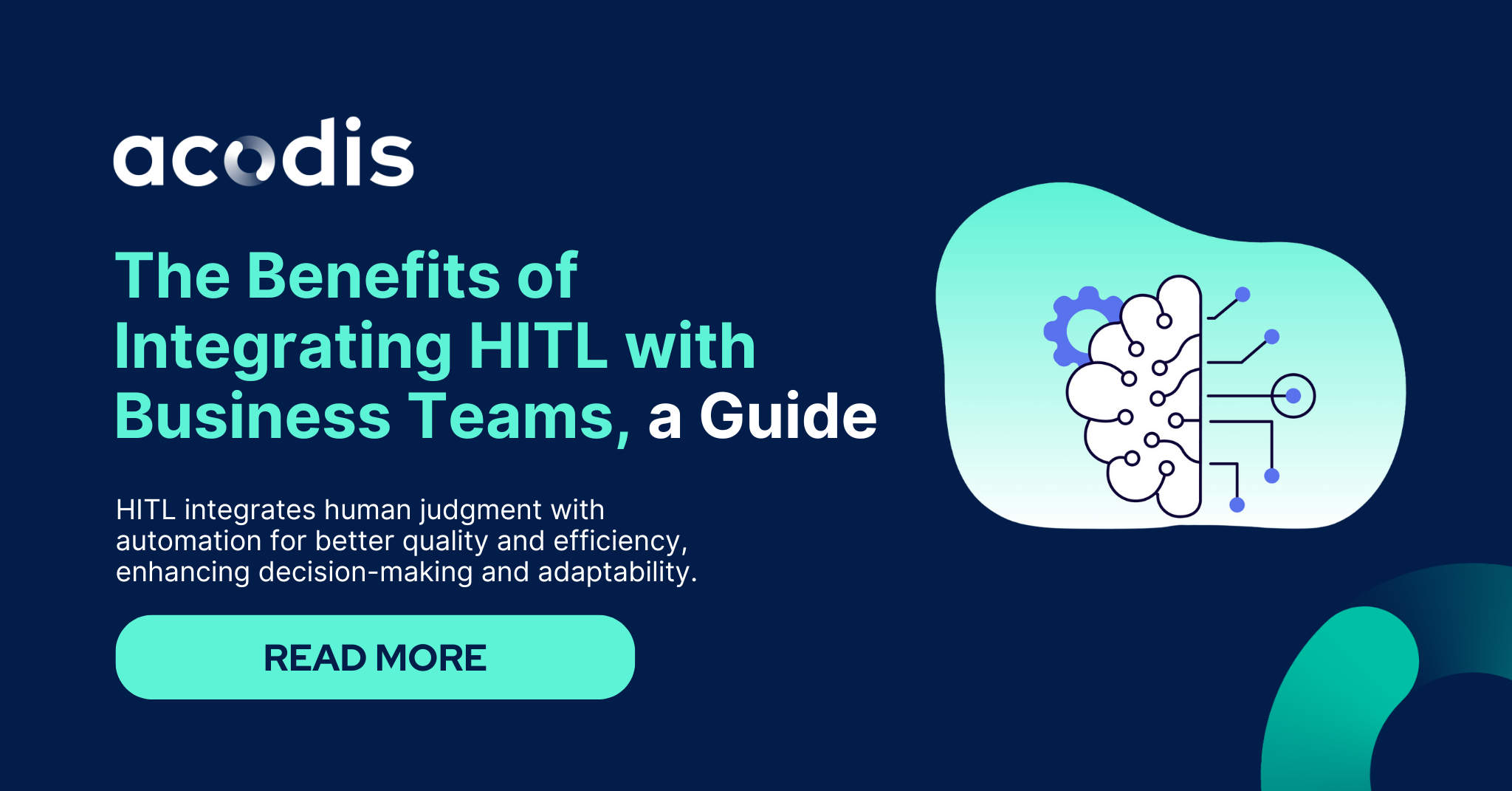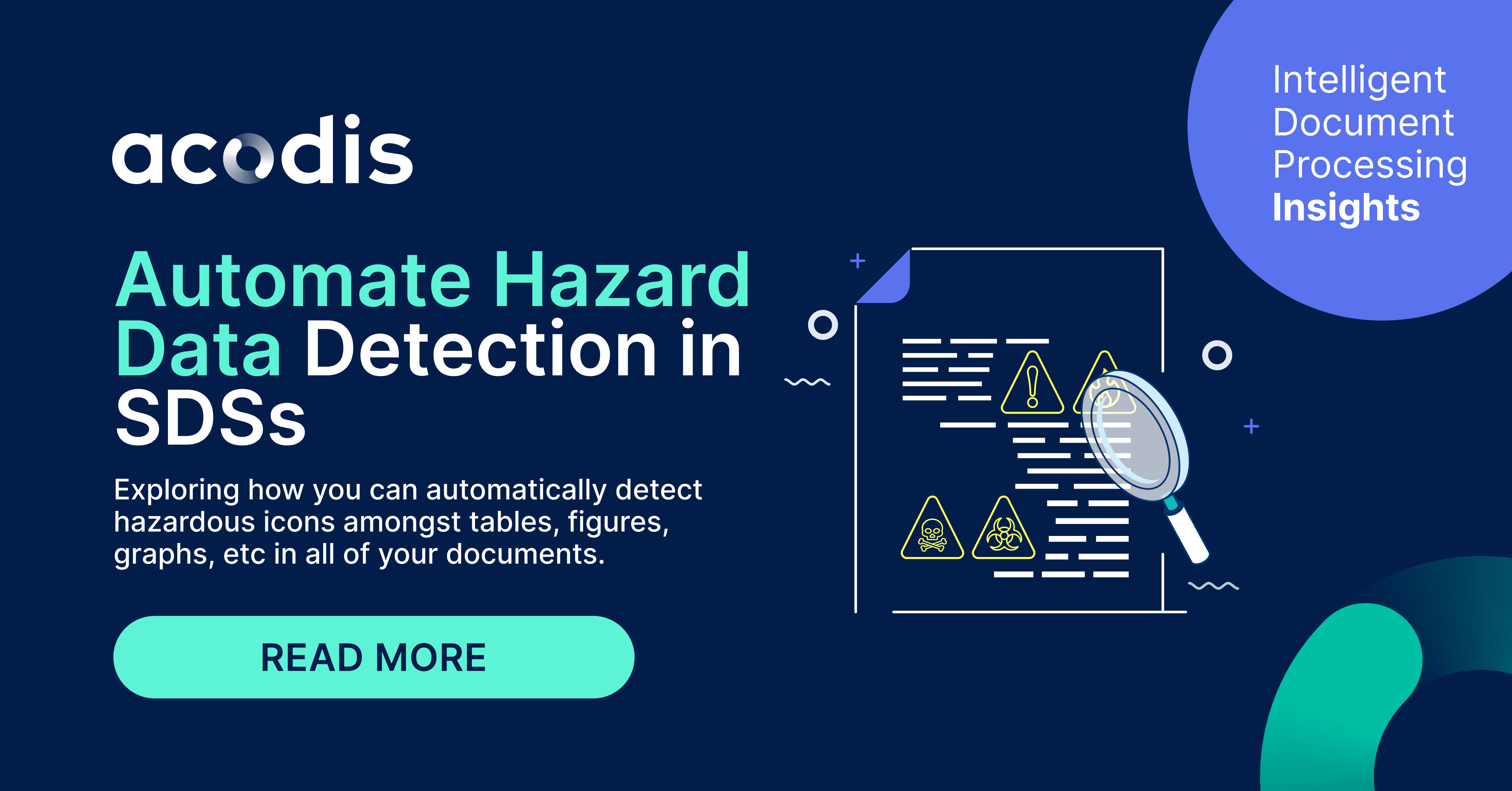Organisations used to automate specific tasks with an RPA system. Today, they have the opportunity of automating entire use-cases by combining intelligent document processing (IDP) with RPA. Doing so leads to high-precision automation that significantly reduces errors and provides a fast return-on-investment.
What is robotic process automation (RPA)?
One of the software solutions developed to process large volumes of data that require simple repetitive tasks is robotic process automation (RPA).
Robotic process automation is the application of technology that allows configuration of computer software or a 'robot' to capture and interpret existing applications for processing a transaction, manipulating data, triggering responses and communicating with other digital systems" (Institute For Robotic Process Automation & AI).
In other words, RPA automates human workers' rule-based actions. The ideal tasks for RPA technology are simple, repeatable, standardised, high-volume, and performed digitally. RPA is based on rules that can automate simple tasks, or a series of simple tasks, thus automating a process. A typical RPA process is a HR bot that automatically updates employee data across multiple HR tools or bots that create monthly reports by collecting data and figures from different systems. However, organisations struggle to scale RPA due to a lack of intelligence typically coming from an AI-engine.
Because RPA allows automation of rule-based processes, it can be given a set of instructions based on a particular rule, e.g., if this, then that. RPA constantly run until all the data to which that rule applies has been processed. For documents with a fixed structure like forms or passports, RPA can process this data using rules or templates to function for millions of records with an identical or similar design. However, if a task is not rule-based, RPA may not be adequate for extracting the required insights without AI's power.
What can RPA do?
- Open email and attachments
- Log into web/enterprise applications
- Move files and folders
- Copy/paste information
- Fill in forms
- Read/write to databases
- Scrape data from the web
- Connect to a system API
- Extract structured data from documents
- Collect social media analytics
- Follow "if this, then that" rules
Definition: Intelligent Document Processing (IDP)
“IDP automates the processing of data contained in documents ― understanding what the document is about, what information it contains, extracting that information, and sending it to the right place.” Source: deloitte.com (2020)
Enhance RPA with AI-based Intelligent Document Processing (IDP)
Intelligent Document Processing enables software robots to automatically read, extract, analyse, and make decisions on data from documents using machine learning (ML). IDP incorporates document processing, artificial intelligence (AI) and RPA. Ultimately, this means that unstructured documents without fixed layouts – résumés, for example – can be processed by robots that extract, interpret and act upon relevant data. Machine learning models also improve the robots’ skills and accuracy at document processing over time as they integrate the data they encounter.
Intelligent Automation Improves RPA
Organisations are now harnessing the power of intelligent automation to increase efficiency and decrease human errors in their document processing. Doing so gives them more time to focus on higher-value tasks and organisational goals. Recent developments in machine learning have to lead to critical breakthroughs for intelligent automation. Ultimately, this type of automation was historically limited because when a human reads a document, reasoning and critical thinking are involved. As humans, we can quickly identify each document type, understand the meaning of the information in the document, and judge based on this information. Today, intelligent document processing comes into play, as the software can read, understand and process documents as humans do in just a few seconds.
Acodis Intelligent Document Processing
Acodis is an IDP engine that uses an innovative purpose-built Document Query Language (DQL) and AI-based learning systems to transform unstructured documents into machine-readable representations. In other words, with Acodis, you can turn any document into structured data in just a few seconds.
This automation is achievable through a machine learning engine that can read – and understand – documents like humans do. Once documents are transformed into machine-readable data, you can effortlessly search, analyse, and process previously hidden data to find new insights. Innovative organisations use IDP to make data usually hidden in documents like forms, invoices or emails available for a fast and seamless process. Acodis integrates with existing systems, like RPA, and helps with document classification, data extraction, and information processing of any document type in any language.
Key Features of Acodis Intelligent Document Processing
- High-speed data processing
- Easy setup and initiation
- Able to fully automate document processing
- Contextually understands data
- Self-learning system
- Seamless integration with existing systems
Acodis Integration into an RPA
Acodis augments RPA processes to perform highly accurate analysis and actions based on information typically locked in documents. Integrations with your RPA system of choice, like UiPath, and elevates document processes beyond basic RPA tasks.
With a user-definable schema and interactive training of the AI models, Acodis offers a high degree of customisation to suit your specific enterprise-grade needs.
RPA can be used to automate document processing, but augmenting this process with intelligent document processing, as with Acodis, has several significant benefits, including but not limited to:
4 Benefits of enhancing RPA with Intelligent Document Processing IDP
- Reduction in the time and costs associated with document processing
- Elimination or reduction of human error in data processing, ensuring compliance
- Releasing staff from manual and repetitive data processing tasks and deploying them to more engaging work
- Optimising organisational processes and reducing costs.




